Tomb 80
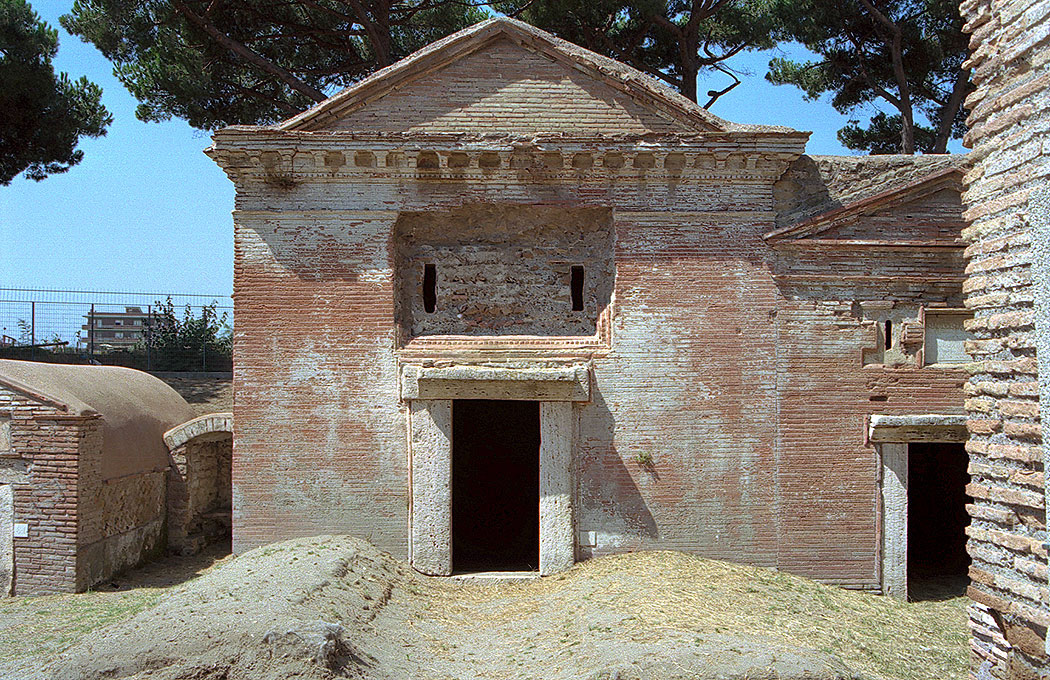
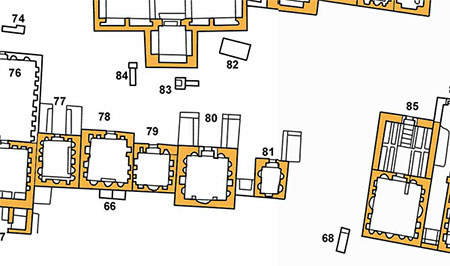 Tomb 80 dates, just like tomb 55, from a later period than the other graves in this row and has been built upon an older tomb "a cassone".
Tomb 80 dates, just like tomb 55, from a later period than the other graves in this row and has been built upon an older tomb "a cassone".
In front of the tomb were a large biclinium and a square brick base for a table. There is no inscription above the entrance. The facade has a cornice with 19 terracotta consoles, each on a distance of 17 cms from each other.
Tomb 80 has been built in a period in which inhumation was already very common. Inside the burial chamber we therefore find only arcosolia.
The floor of the burial chamber was probably covered by a polychrome mosaic, divided in panels on which the heads of the nine muses were depicted. A part of this mosaic is nowadays attached on the side wall of the nearby tomb 34.
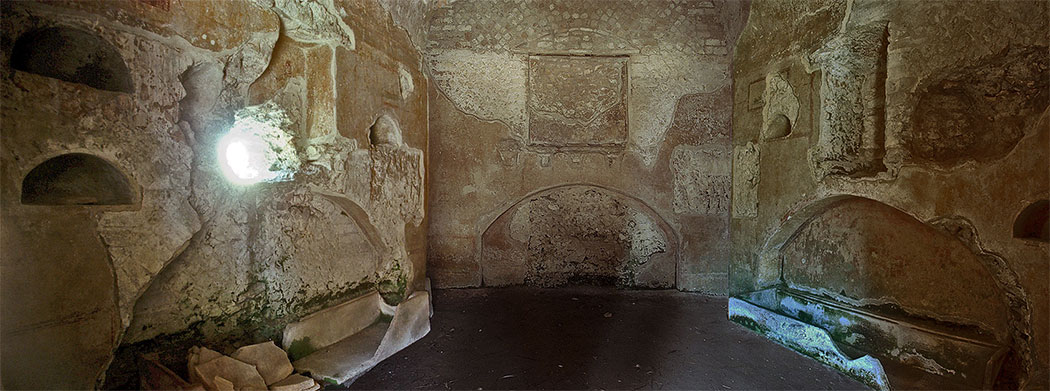
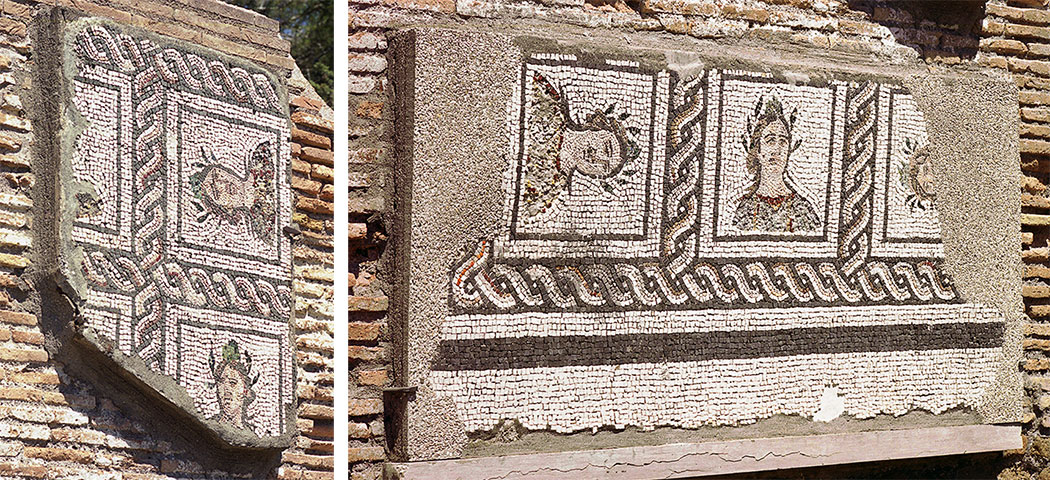
Most of the many decorations in this tomb have been removed and are stored in the Ostian depots. In the arcosolium on the left wall was a painting of a wild animal hunt.
In the middle, riding on a horse, is the hunter. These kind of scenes represented the courage of the deceased.
To the right, on the same wall, was a painting of a kneeling man sharpening his knife to kill Marsyas (not depicted). He was found to be guilty of challenging Apollo. The latter was probably painted on the other side of the niche.
On another wall was a painting of Artemis, sharpening an arrow. In the central niche in the left wall we can still see Paris and on the opposite right wall Venus, holding a lance in her left and an apple in her right hand (museum of Ostia, inv. nr. 10044).
Tomb 80 has been built in the middle of the second century AD.
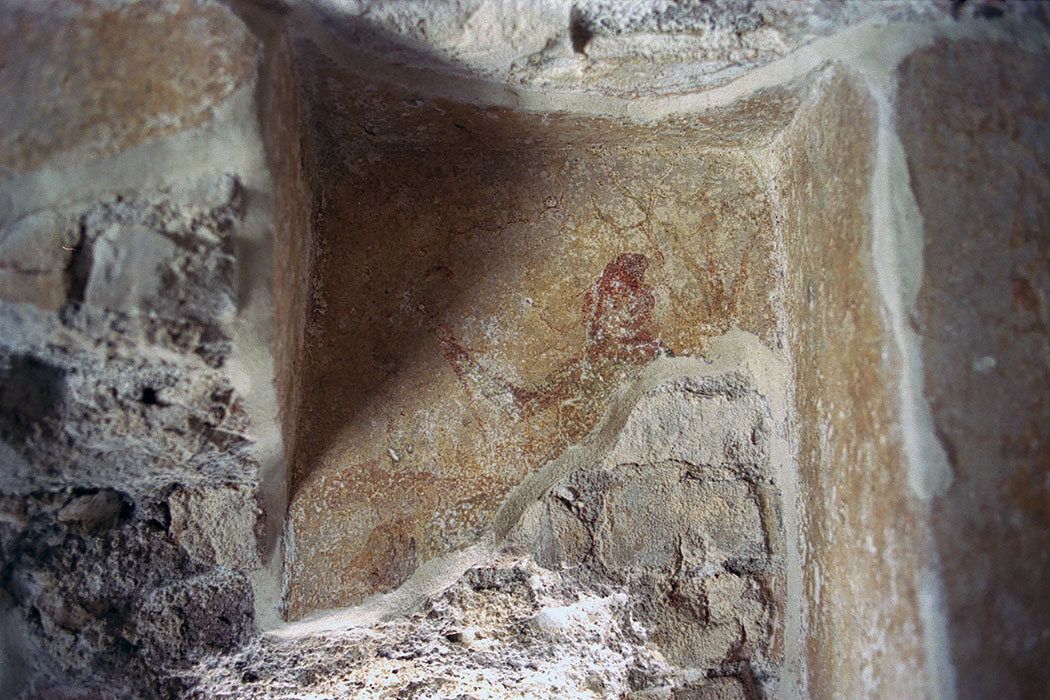
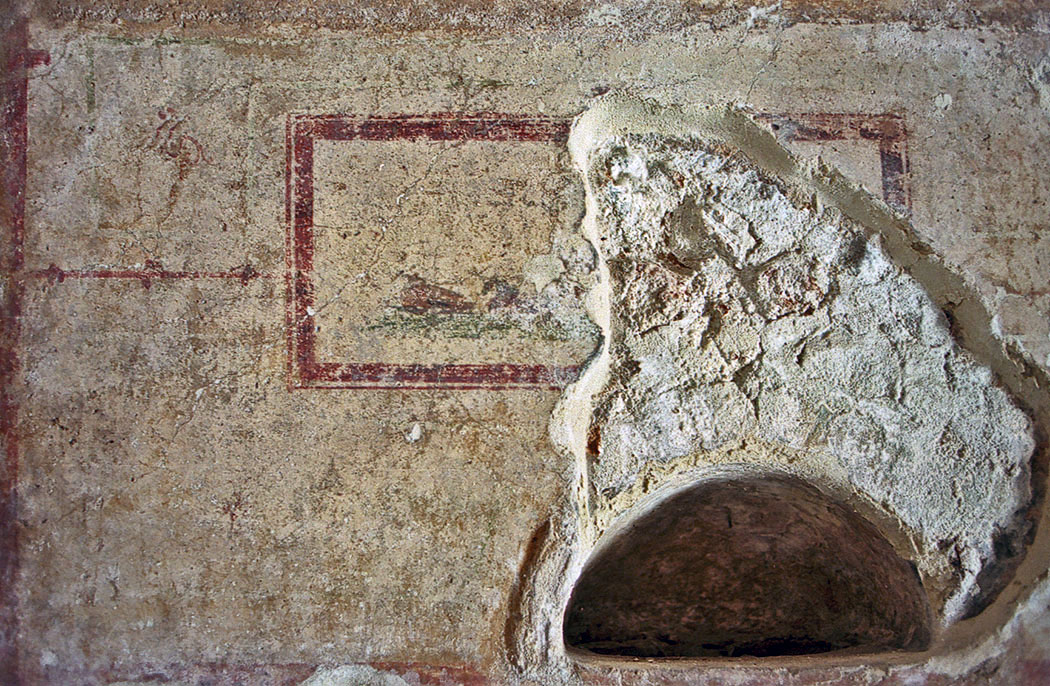
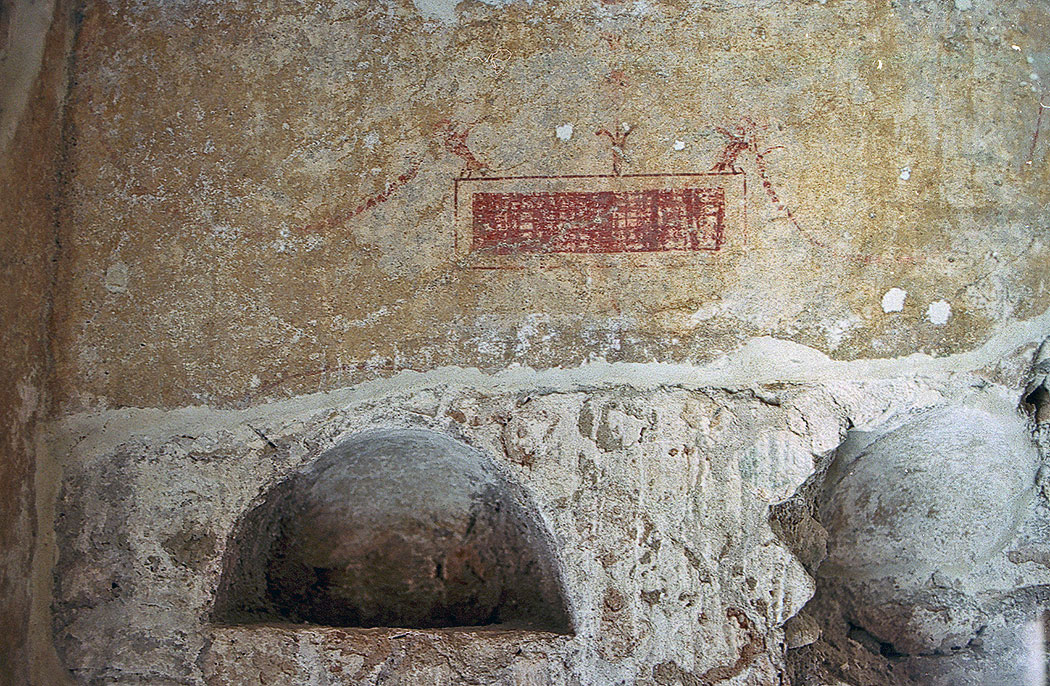
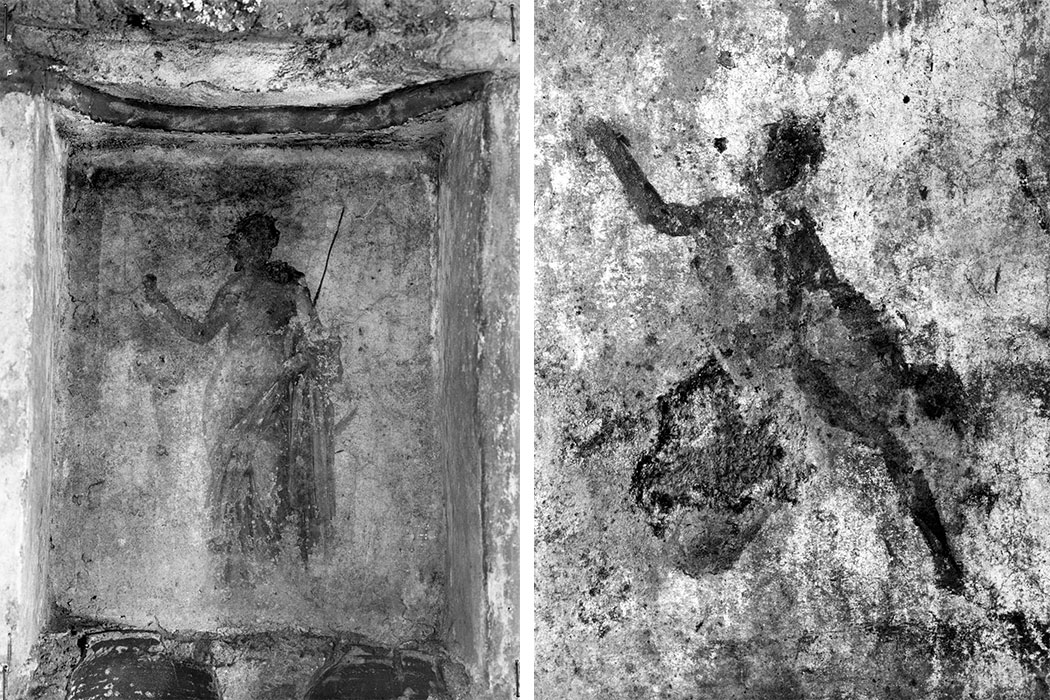
- Sources
- Russel Meigs - Roman Ostia, At the Clarendon Press 1973
- Guido Calza - Necropoli nell'Isola Sacra'(1940)
- Dr. Jan Theo Bakker.
- Hilding Thylander - Inscriptions du port d'Ostie (Lund C W K Gleerup 1952).
- Ida Baldassarre, Irene Bragantini, Chiara Morselli and Franc Taglietti - Necropoli di Porto, Isola Sacra (Roma 1996).
- Notes
- 1: Escavations in the 70ths have brought to light a threshold covered with black and white mosaic. Thus, the polychromic mosaic dates from a later period or doesn’t belong to this tomb at all. - I. Baldassarre, I. Bragantini, Ch. Morselli en F. Taglietti: Necropoli di Porto (1996)
Isola Sacra Index (D)

Speciale sectie over de Romeinse begraafplaats van Portus (Engels)....
Weiterlesen ...Leptiminus (Englisch))
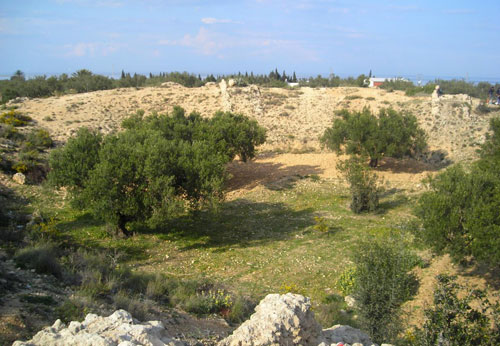
At the site of present-day Lamta on Tunisia's east coast, there was already a port city named Leptis Minor ....
Weiterlesen ...Römisches Seehandelsrecht (Englisch)

Roman law is the finest monument that Rome bequeathed to Western Europe....
Weiterlesen ...Sullecthum (Salakta) Englisch

In the Sahel, in the Tunisian province of Madhia, we find by the sea the small town of Salakta....
Weiterlesen ...Colonia Julia ad Turrem Libisonis (Englisch)

.....probably founded by Julius Ceasar around 46 BC, was located in the north-west of Sardinia.
Weiterlesen ...
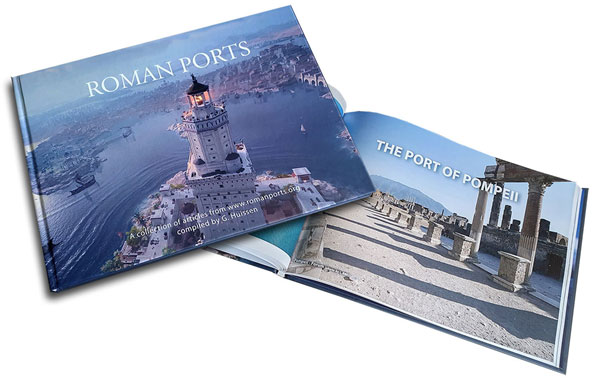
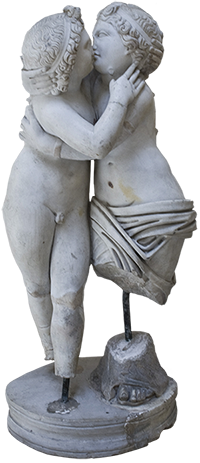 We are committed to providing versions of our articles and interviews in several languages, but our first language is English.
We are committed to providing versions of our articles and interviews in several languages, but our first language is English.